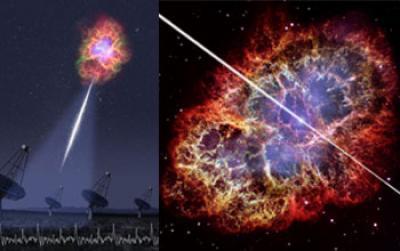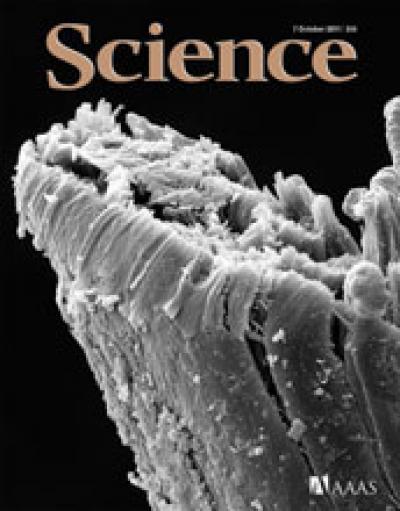Pulsars--highly magnetized, rotating stars--were first discovered more than 40 years ago, and are now believed to be a type of stellar leftover, or remnant--in this case, a neutron star--that results from the explosion and gravitational collapse of a more massive star.
In the October 7 issue of Science, astrophysicists with VERITAS report an unexpected finding in the Crab Pulsar, which is the central star in the Crab Nebula in the constellation of Taurus. They detected pulsed gamma rays, or light energy, above one hundred thousand million electron volts. The detection cannot be explained with current pulsar models that show pulsed gamma rays in the range of a few hundred million electron volts to a few thousand million electron volts.

The Crab Pulsar emits light energy above one hundred thousand million electron volts.
(Photo Credit: David A. Aguilar (CfA) / NASA / ESA José Francisco Salgado, Adler Planetarium. Based on images by M SubbaRao, S Criswell, B Humensky, and JF Salgado.)
The finding is causing researchers to consider new theories about gamma-ray production.
More on the discovery can be found in press releases by the Harvard-Smithsonian Center for Astrophysics, University of California, Los Angeles, University of California, Santa Cruz and others.
The paper, online in Science today, had 95 coauthors, including scientists from 26 institutions in five countries, who are part of the VERITAS collaboration.
Left is an artist's conception of the VERITAS array of imaging atmospheric Cherenkov telescopes (IACTs) observing the Crab Nebula. IACTs detect high-energy gamma-rays.
Also seen is a very high energy gamma-ray originating from the Crab Nebula producing an airshower in the high atmopshere. The telescopes observe the Cherenkov radiation produced by the energetic electrons in the airshower.
Right is an artist's conception of the pulsar at the center of the Crab Nebula, with a Hubble Space Telescope photo of the nebula in the background.

The researchers' work is described in the Oct. 7, 2011 issue of the journal Science.
(Photo Credit: Copyright AAAS 2011)
Source: National Science Foundation